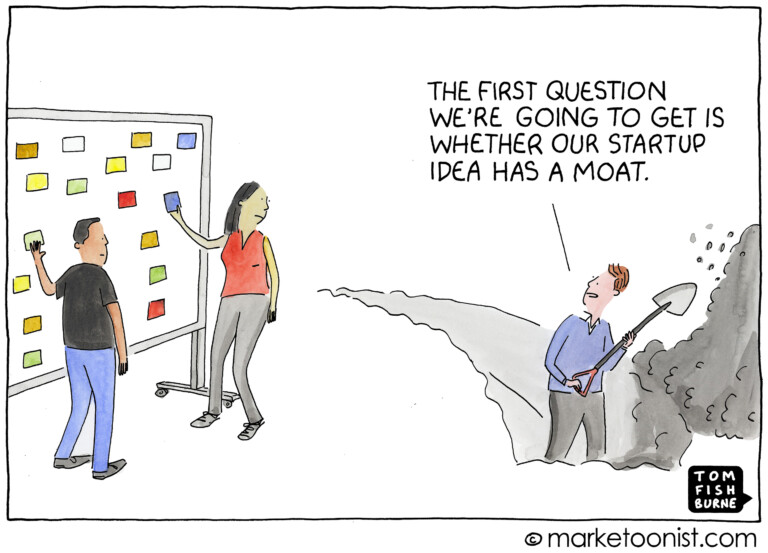Table of Contents
- It’s a Common Misperception and Unfortunate Prevailing Opinion in Real Estate
- Here are Some Quick Stats From the National Association of Realtors to Consider
- Here’s the Math
- Staying in the Top 20% is Even Harder
- Direct to Consumer = No Real Estate Agent
- Marketing and Brand Building — the Keys to Success in a New World

It’s a Common Misperception and Unfortunate Prevailing Opinion in Real Estate
The prevailing opinions are generally wrong. The truth is that selling real estate for a living is one of the hardest gigs out there, and it’s only getting harder.
For clarity, I’m not talking about the paperwork, legalese, disclaimers, inspections, open houses, showings, market research, or the daily grind of real estate – that’s another story altogether.
I’m talking about survival, sustainability and the degree of difficulty in earning enough money to actually make a living selling real estate.
Here are Some Quick Stats From the National Association of Realtors to Consider
- — 1,383,010 licensed agents in the U.S. as of July 2019
- — 5,340,000 existing homes sold in 2018
- — 667,000 newly constructed homes sold in 2018
- — 6,007,000 total number of homes sold
Now let’s use the 80/20 rule (aka The Pareto Principle) to get a better grasp of how many homes agents are selling.
(Note: The 80/20 rule for real estate suggests that 80% of all the homes are sold by only 20% of the agents. Based on my experience I would argue that it is probably closer to 85/15 – at least in the luxury coastal markets in the U.S.)
Here’s the Math
20% of the 1,383,010 agents sell 80% of the 6,007,000 total homes sold.
Restated, 276,600 agents sell 4,805,600 homes and 1,106,408 agents sell 1,201,400 homes.
This means that 20% of agents sell an average of 17.37 homes per year and that 80% of agents sell an average of 1.085 homes per year.
The reality of selling real estate is that 80% of agents don’t make a living doing it.
Still sound easy?
Staying in the Top 20% is Even Harder
Let’s say you’re an agent who has made it into that coveted top 20% group – congratulations!
Now you can now sit back, put your feet up on your desk, and just wait for the phone to ring from buyers and sellers right? You’re in high demand, right?
Wrong. In fact, your job is even tougher now and I feel your pain.
At the minimum, you have to find a way to continue to sell your average of 17.37 homes per year just to stay even and try and grow from there. That’s tough to do every single year.
Oh, and your competition needs to do the exact same thing, so don’t look over your shoulder because they’re all coming after your business too.
Call me crazy, but that’s why I love this business. I don’t sell homes; I partner with agents to help them get more homes to sell.
It’s hard work, but we’re in this together. And I like that.
Direct to Consumer = No Real Estate Agent
To add to the calamity and disruption agents face today – big tech is coming after you too.
Don’t be fooled into thinking that the tens of billions of dollars being invested in Prop Tech will only make your job easier and more efficient. In Prop Tech, “efficient” is code for disintermediation – eliminating the agent entirely from the transaction.
Why? Because there’s approximately $60 Billion per year in real estate commissions up for grabs. (Not to mention well over a trillion dollars per year transacted annually.)
Prop tech is all about the consumer, not the agent – and the shortest distance between two points is a straight line, i.e. direct to consumer.
The direct-to-consumer model is starting to gain momentum and appears to be accelerating with Zillow recently going all in and pivoting to the iBuyer model.
To illustrate this point, iBuyer transaction volume was just under 60,000 “sides” in 2019, that’s more than 6x the side volume just two years prior according to real estate tech strategist Mike DelPrete.
Last year, Zillow began buying and selling homes directly in a new market every single month and is growing very fast.
Agents, should you be scared? For now, I would lean more towards staying informed but be sure to understand the implications, for which there are many.
Being scared is ok too, it’s a healthy mindset – fear is good, it keeps you alive.
The direct-to-consumer model is still in its infancy with iBuyers representing only .5% of the national market share for total real estate transactions in 2019 but the numbers add up quickly – as iBuyer volume totaled $8.7 billion in total transaction value in 2019, which is not insignificant.
And the model has not proved profitable yet with Zillow losing around $87 million on its home-buying efforts just last quarter.
But, never say never.
This train has barely left the station and is gaining speed every month.
Marketing and Brand Building — the Keys to Success in a New World
Make no mistake, if you sell real estate for a living you’re running a business.
Therefore, you need to treat it like one. That means you need to think strategically about everything you do, every conversation you have, every hour of time you commit and invest – after all, you’re the CEO, right?
Like any business, marketing and brand building are essential to long-term success and real estate is no different.
But it’s harder today because of all the noise in the market and the fact that buyers and sellers are more sophisticated than ever before thanks to all the tech-enabled resources they have at their disposal.
Real estate agents have to constantly up their marketing game to stay relevant and stand out from the herd of agents that flood every community in search of listing and buyer leads.
Upping your game doesn’t mean chasing shiny new objects, taking shortcuts, and interrupting everyone with constant messaging telling the world that you exist.
It’s a steady, methodical, repetitive, and strategic approach to earning trust and authority with your desired audience in the markets you target.
What does success look like to you? Define it. Write it down. Memorialize it. Reverse engineer it.
Plan it.
Execute it.
Review it
Ask yourself how you can add more value and become an indispensable, invaluable, and trusted advisor to the audience you seek to serve.
Your future livelihood may very well depend on it.






